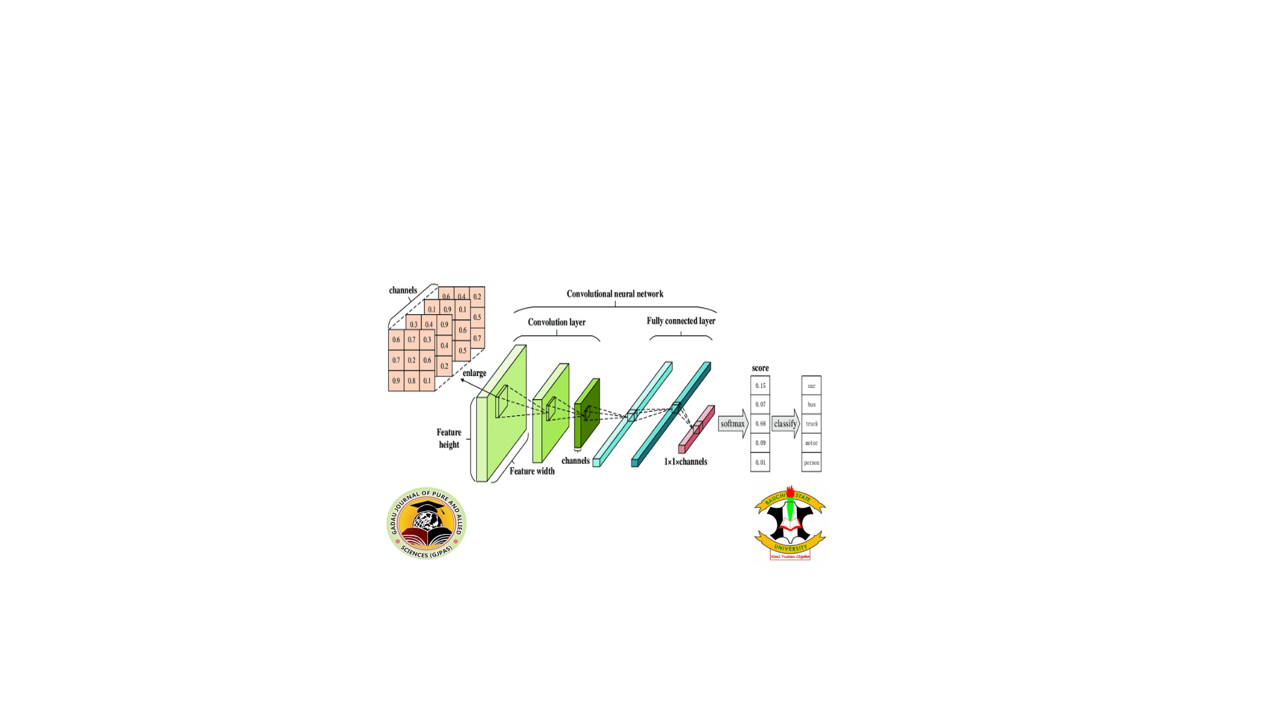A Deep Learning-Based Predictive Model for Pattern Recognition and Classification of Cancerous Skin
DOI:
https://doi.org/10.54117/3x38yh88Keywords:
Skin cancer detection; Deep learning; Convolutional neural network; Image classification; medical imaging.Abstract
Detecting cancerous skin lesions early is essential for improving treatment outcomes and saving lives. However, traditional diagnostic methods often depend on expert judgment, which can be time-consuming and sometimes subjective. To address this challenge, our study introduces a deep learning-based predictive model designed to recognize patterns and classify cancerous skin lesions automatically using medical images. The model leverages convolutional neural networks (CNNs) to capture key visual features from dermoscopic images and employs advanced classification layers to distinguish between benign and malignant lesions with high accuracy. The model was developed and validated using a comprehensive and diverse dataset of dermoscopic images retrieved from the online repository. Through systematic fine-tuning, we optimized the network’s performance with a particular focus on accuracy, precision, and recall, aiming to support dermatologists in clinical decision-making. The resulting outputs of this study demonstrates that the proposed model is both robust and effective in detecting various types of skin cancer, including melanoma, while maintaining a low rate of false positives. Compared to existing diagnostic -methods, the model achieved improved outcomes, recording a precision of 0.92, an accuracy of 89.21%, and a recall of 0.91. These results underscore the significant potential of deep learning to enhance early detection, reduce the reliance on invasive procedures, and ultimately contribute to better patient outcomes.
References
Abdar, M., Samami, M., Mahmoodabad, S. D., Doan, T., Mazoure, B., Hashemifesharaki, R. Makarenkov, V. (2021). Uncertainty quantification in skin cancer classification using three-way decision-based Bayesian deep learning. Computers in biology and medicine, 135, 104418.
Adegun, A. A., & Viriri, S. (2020). FCN-based DenseNet framework for automated detection and classification of skin lesions in dermoscopy images. IEEE Access, 8, 150377-150396.
Afza, F., Sharif, M., Khan, M. A., Tariq, U., Hwan-Seung, Y. Cha, J. (2022). Multiclass skin lesion classification using hybrid deep features selection and extreme learning machine, Journal of Sensors, 22(3).
Ajit, A. Acharya, K. Samanta, A. (2020). A review of convolutional neural networks, 2020 international conference on emerging trends in information technology and engineering (ic-ETITE), Publisher: IEEE.
Ali, M. S., Miah, M. S., Haque, J., Rahman, M. M., Islam, M. K. (2021). An enhanced technique of skin cancer classification using deep convolutional neural network with transfer learning models, Journal of Machine Learning with Applications, 5(1).
Bechelli, S., Delhommelle, J. (2022). Machine learning and deep learning algorithms for skin cancer classification from thermoscopic images, Journal of Engineering 9(3).
Brigid M. O'Brien, (2009). A practical approach to common skin problems in returning travellers, Travel Medicine and Infectious Disease, Elsevier, 7(3).
Brunke, L., Greeff, M., Hall, A. W., Yuan, Z., Zhou, S., Panerati, J., & Schoellig, A. P. (2022). Safe learning in robotics: From learning-based control to safe reinforcement learning. Annual Review of Control, Robotics, and Autonomous Systems, 5(1), 411-444.
Christlein, V., Spranger, L., Seuret, M., Nicolaou, A. Král, P., Maier, A. (2019). Deep generalized max pooling, International conference on document analysis and recognition (ICDAR) 2019.
Das, K., Cockerell, C. J., Patil, A., Pietkiewicz, P., Giulini, M., Grabbe, S., & Goldust, M. (2021). Machine learning and its application in skin cancer. International Journal of Environmental Research and Public Health, 18(24), 13409.
Höhn, J., Hekler, A., Krieghoff-Henning, E., Kather, J. N., Utikal, J. S., Meier, F., . . . Schlager, J. G. (2021). Integrating patient data into skin cancer classification using convolutional neural networks: systematic review. Journal of medical Internet research, 23(7), e20708.
Keerthana, D., Venugopal, V. N, Malaya K., Mishra, M. (2023). Hybrid convolutional neural networks with SVM classifier for classification of skin cancer, Journal of Biomedical Engineering Advances, 5(1).
Pacheco, A G., Krohling, R. A. (2021). An attention-based mechanism to combine images and metadata in deep learning models applied to skin cancer classification, IEEE journal of biomedical and health information, 25(9).
Saarela, M., Geogieva, L. (2022). Robustness, stability, and fidelity of explanations for a deep skin cancer classification model, Journal of Applied Sciences, 12(19).
Skin Cancer Detection, ISIC Images : An open dataset available on Kaggle, retrieved from: https://www.kaggle.com/datasets/rm1000/skin-cancer-isic-images, April, 2025.
Vidya, M., & Karki, M. V. (2020). Skin cancer detection using machine learning techniques. Paper presented at the 2020 IEEE international conference on electronics, computing and communication technologies (CONECCT).
Waheed, S. R., Saadi, S. M., Rahim, M. S. M., Suaib, N. M., Najjar, F. H., Adnan, M. M., & Salim, A. A. (2023). Melanoma skin cancer classification based on CNN deep learning algorithms. Malaysian Journal of Fundamental and Applied Sciences, 19(3), 299-305.
Yousef H, Alhajj M, Fakoya AO, Sharma S. Anatomy, Skin (Integument), Epidermis. In: StatPearls. StatPearls Publishing, Treasure Island (FL); 2025. PMID: 29262154. accessed in June 2025, from https://europepmc.org/article/nbk/nbk470464

Downloads
Published
Issue
Section
License
Copyright (c) 2025 Gadau Journal of Pure and Allied Sciences

This work is licensed under a Creative Commons Attribution 4.0 International License.

